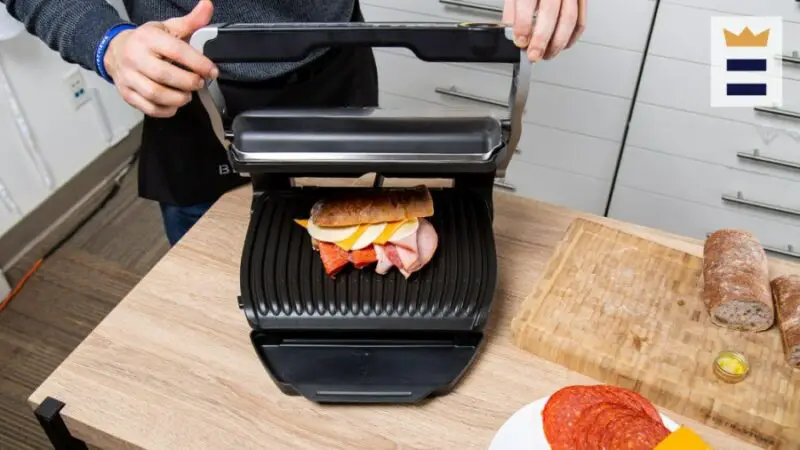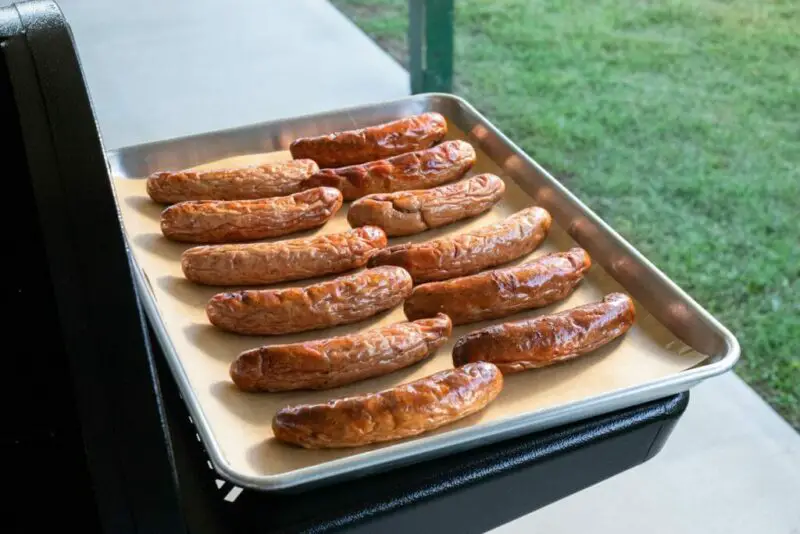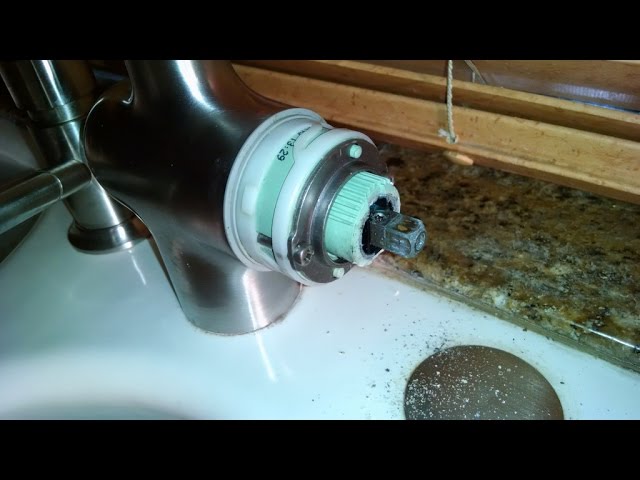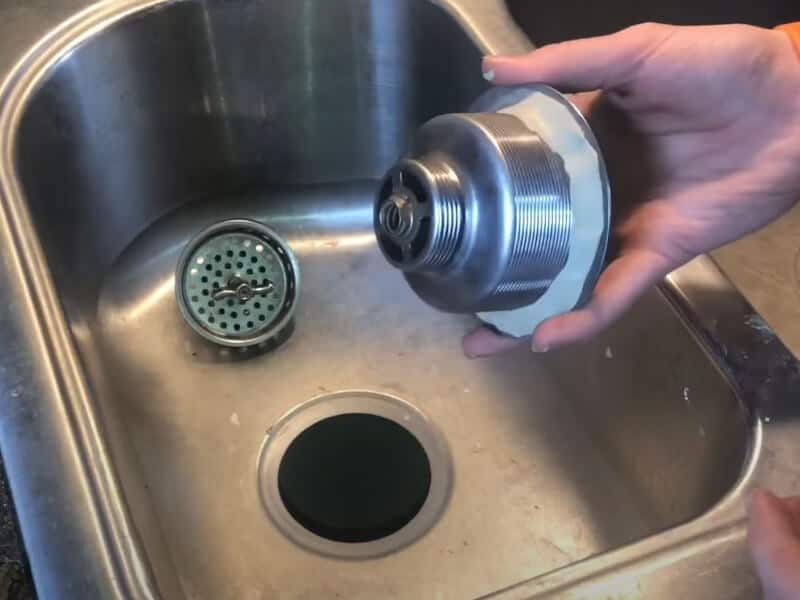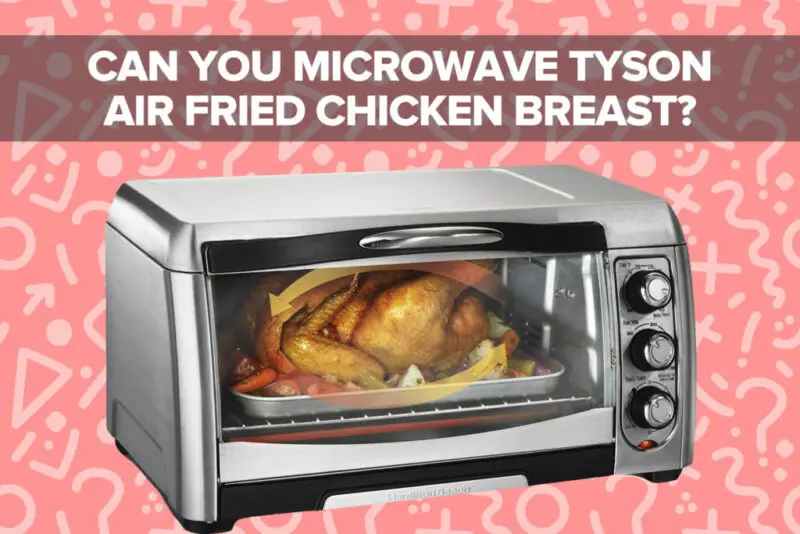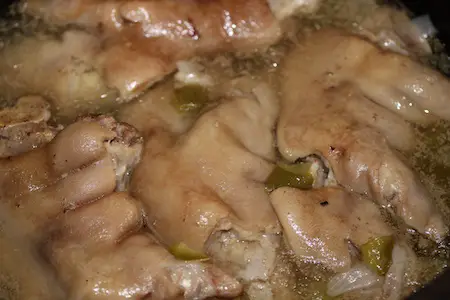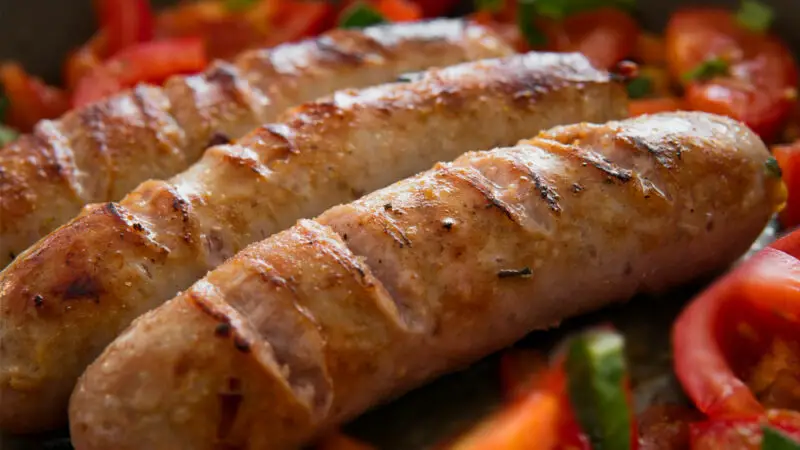A George Foreman grill that’s sticking can be super annoying. You expect nice, juicy grilled meats and veggies, but instead you get tore up food that’s practically welded to the grill plates. Not cool!
Don’t trash your George Foreman just yet though. In most cases, this issue is fixable with some cleaning and maintenance. Here’s why your George Foreman may be sticking, and what you can do about it:
Grease and Food Buildup
This is the most common culprit when a George Foreman grill is sticking. Just like any other grill, grease and burnt food particles can accumulate on the cooking surface over time. All that gunk gets sticky, causing your food to stick and tear when you try to flip or remove it.
To fix this:
- Unplug the grill and let it fully cool if needed.
- Wipe the grill plates down thoroughly with paper towels, hot soapy water, and a plastic scrubbing brush or sponge. Avoid abrasive scouring pads.
- If there’s a lot of built-up grease, you may need to use a degreasing cleanser like Formula 409 or something with a little more grit to it. Spray it on, let it sit briefly, then scrub it off.
- Rinse away any residual soap and be sure to fully dry the grill plates before using again.
Regular cleaning each time you use the grill can prevent major buildup and sticking. George Foreman also recommends lightly oiling the plates before cooking for even better food release.
Damaged Non-Stick Coating
George Foreman grills rely on a non-stick coating to keep foods from sticking. Over time, this coating can deteriorate from overheating, vigorous scrubbing, or using abrasive cleaners. Damaged spots in the non-stick finish are prime spots for food to weld itself to the grill.
Check the grill plates closely for scratched, flaked, or bubbled areas in the coating. If damage is mild, avoid scrubbing those spots to prevent further wear. If the coating is severely compromised, replacement grill plates may be needed.
When cleaning, use only soft plastic, nylon, or silicone bristle brushes and scrub gently to preserve the non-stick coating. Avoid scouring pads and harsh chemical cleaners.
Not Preheating Properly
For best cooking results, always preheat your George Foreman grill for a few minutes before adding food. This allows the plates to get hot enough to quickly sear the food, which helps prevent sticking.
If you slap cold food on a cold grill, it will release juices and stick before it has a chance to sear. So be sure to preheat the grill first! Refer to your model’s manual for the recommended preheat time.
Overcrowding the Grill
When you overload the George Foreman grill with too much food, it’s harder for the heat to circulate evenly around each piece. Spots that don’t make full contact with the hot grill plates are more likely to stick.
Try cooking fewer pieces at a time. Use the recommendations in your owner’s manual for capacity on your particular model. Leave a little space around each food item to allow heat to access all sides.
Using Low Heat
Cooking at too low of a temperature can also cause sticking. The grill plates need to be hot enough to quickly sear the exterior of foods.
Cranking up the heat helps create that nice sear to seal in juices. Consult your owner’s manual to see if your model has adjustable temperature controls. If not, allow plenty of preheat time and don’t overload the grill.
Moving Food Too Soon
Ever try flipping a pancake too early, only to leave half of it sticking to the pan? Same idea with a George Foreman grill.
If you try to move or flip the food before it finishes cooking on that first side, it will stick and tear. Let it sear sufficiently on one side before gently attempting to open the grill or flip food. Use tongs or a thin spatula to support the food underneath as you move it.
Using Tools That Damage the Coating
As mentioned, the non-stick coating on George Foreman grill plates is delicate and can be compromised over time. Using the wrong cleaning tools or cooking utensils accelerates wear and tear.
Never use metal spatulas, sharp scrapers, or abrasive scouring pads on the grill plates. Opt for soft plastic, silicone, wood, or bamboo utensils to protect the coating. Be gentle when cleaning as well.
Temperature Fluctuations
If the temperature isn’t consistent across the grill plates, you’ll end up with some sticky spots. The plates may not be making uniform contact or the heat controls could be malfunctioning.
Try pressing down on the top of the grill when closed to improve plate alignment. If that doesn’t help or the grill isn’t heating up properly at all, the internal heating components may need repair. Reach out to George Foreman customer service about possible maintenance or replacement parts.
What to Do if Food is Already Stuck to the Grill
Uh oh, something got stuck to your George Foreman grill! First, let the grill cool completely before attempting to remove the food. Then try these tricks:
- Use a plastic or wooden utensil to gently pry or scrape at the stuck bits. Avoid metal tools that could further damage the coating.
- Pour a little cooking oil or non-stick spray on the trouble spot and let it soak for 5-10 minutes. The oil will help loosen the bond. Wipe away oil and remnants after.
- Mix equal parts baking soda and water into a spreadable paste. Apply to the stuck food. Let sit briefly before scrubbing and rinsing away. The baking soda is mildly abrasive but won’t ruin the coating.
- Fill a squirt bottle with equal parts vinegar and water. Target the spray at stuck bits and let fizz/bubble for a few minutes before rinsing.
- Sprinkle salt on the stuck food and rub gently with a paper towel or soft cloth. The salt works as a light abrasive. Rinse the grill plate when you’re done.
With some perioding cleaning and care, you can keep your George Foreman grill from regularly sticking and ruining food. But even the best taken care of grills will occasionally get some stuck bits. Just utilize the tips above to remove stubborn food and get back to grilling.
Grilling Tips to Prevent Sticking
Here are some helpful grilling techniques that can prevent food from sticking on a George Foreman:
- Always preheat the grill thoroughly before adding food. Shoot for at least 3-5 minutes preheating time.
- Lightly coat the grill plates with vegetable oil before cooking. Just wipe with an oiled paper towel.
- Don’t overload the grill. Leave space around food for heat circulation.
- Only flip food once with tongs or a thin spatula. Don’t move food around too much or it could tear/stick.
- Allow food to finish cooking on one side before attempting to flip or remove it.
- Use moderate heat settings. Too high can burn, too low makes food greasy. Adjust as needed.
- Wipe down the grill plates immediately after each use to remove grease that could burn on.
- Employ non-stick cooking sprays and grill waxes/oils to boost food release.
Common Foods Prone to Sticking
Some foods are naturally more prone to sticking on the grill than others. Since George Foreman grills cook from both sides simultaneously, thick or dense foods are especially at risk of sticking before the insides are fully cooked.
Here are some common sticky culprits, with tips to combat:
Steak
High-fat meats like steak always come with a sticking risk when searing. Go for leaner cuts like filet mignon or sirloin. Trim excess fat before grilling. Use tongs, not a fork, to gently flip.
Chicken Breasts
Chicken breasts are lean but can stick if too large. Pound them thinner so they’ll cook faster all the way through. Brining adds moisture and seasoning to help prevent sticking too.
Hamburgers
The fatty meat and juices make burgers notoriously sticky. Add breadcrumbs or egg to the beef mix. That helps bind the patties so they hold together better on the grill.
Hot Dogs
Leave hot dogs in the packet or pierce several times with a fork before grilling. This allows steam and juices to escape instead of getting trapped and causing burst skins or sticking.
Fruit
Fruit juices run off quickly on a grill. Brush fruit with a light coating of oil before cooking to increase browning and prevent sticking. Or use a grill pan so juices don’t directly hit the plates.
Veggie Burgers
Bean or grain-based veggie burgers stick easily without plenty of oil. Coat extra well with cooking spray or brush with oil. Using a grill pan rather than direct contact with the plates helps too.
Quesadillas
Ooey cheese causes quesadillas to stick to any grill. Use just enough cheese to lightly coat tortillas. Stack two small tortillas instead of over-filling one big one. Brush the outsides with oil.
Fish
Lean fish fillets have a high risk of sticking without added fat. Coat well with oil or butter. Cook skin-side down first for more protection. Use grill pans or perforated aluminum foil on the grill plate.
Shrimp
Shrimp need constant motion or they’ll cling right to the grill. Use shrimp trays or skewers so you can easily turn each shellfish. Baste with garlic-butter for flavor and moisture.
Top Troubleshooting Tips
If you’re still battling a sticky George Foreman grill, here are some top troubleshooting tips:
Clean meticulously – Scrub away all grease and food residue after each use. Degrease periodically. This prevents major build-up that leads to sticking.
Avoid overcrowding – Only cook the recommended capacity for your model. Too much food prevents proper searing.
Let it preheat – Always give the grill time to fully heat up before adding food. Cold food on cold plates is a recipe for sticking.
Take rectifying action – If a piece of food gets stuck, deal with it promptly after cooking. Don’t let it bake on there making the problem worse.
Examine closely – Check the grill plates for scratches, flakes, bubbles or damage in the nonstick coating. Fix minor flaws; replace if unsalvageable.
Stop forceful cleaning – Aggressive scrubbing or harsh cleaners damage the sensitive nonstick coating. Use soft bristle brushes and gentle pressure.
Mind the tools – Only use plastic, wood or silicone utensils. Metal spatulas and scrapers ruin the coating and cause sticking.
Try cooking sprays – A light coating of nonstick spray or vegetable oil improves food release. But don’t go overboard.
Lower heat – If food burns on quickly, lower the temperature setting. Some fat/moisture in food helps prevent dried on remnants.
When to Replace Your George Foreman Grill
George Foreman grills can last for years when properly maintained. But if you notice any of the following, it may be time to shop for a replacement:
- The nonstick coating is flaking off extensively or totally ruined
- Grill plates are excessively pitted, corroded, or scratched
- Heating elements don’t warm up sufficiently
- Dials or temperature controls are damaged and non-functional
- Closing mechanism doesn’t align the plates properly
- Grease run-off tray is cracked or warped
- Any parts show signs of melting from overheating
- Burnt food and grease can’t be cleaned even with heavy scrubbing
George Foreman offers full sized grills starting around $40-50 for basic models and up to several hundred dollars for larger, higher tech options. Thankfully you don’t have to break the bank for a functioning, effective grill.
Look for replacements with durable nonstick coatings, adjustable heat, fat removing slopes, and dishwasher safe plates for easiest cleaning. Read reviews and watch for sales to get the best value. With a little TLC, your new George Foreman grill should be sticking around for years to come!
FAQs About George Foreman Grills Sticking
Here are answers to some frequently asked questions about sticking issues with George Foreman grills:
Why are my grill marks sticking to the George Foreman?
If you see grill marks from the plates sticking to your food, it’s likely because burnt on grease and food debris has accumulated on the cooking surface. Scrub the plates well and use a degreasing cleanser if needed. Also try lightly oiling the plates before cooking.
Why do veggies stick to my George Foreman grill?
Vegetables often release water when cooked, causing steaming instead of searing. This allows them to stick. Brush veggies lightly with oil before grilling. You can also use perforated grilling sheets to elevate them off direct contact with the plates.
Why is my George Foreman grill smoking when I use it?
Excess smoke is usually from grease and food residue getting super heated on the cooking surface. Unplug your grill immediately. Once cool, clean the plates thoroughly before using again. Persistent smoke could mean it’s time for a replacement.
Why is my George Foreman grill not cooking evenly?
Uneven cooking is likely because the grill plates are no longer aligning correctly to evenly press on the food. Make sure the housing isn’t warped. Also check for food buildup preventing full closure. If the problem persists, the grill may need to be replaced.
Why does my grill smell bad after cleaning?
If you use very hot water or abrasive cleaners, it can strip off protective seasonings on a George Foreman grill. This exposes the metal underneath and causes off smells. Avoid caustic cleaning products and only hand wash gently with mild soap and water.
How can I restore my George Foreman grill’s nonstick coating?
Once the nonstick finish starts severely flaking off, there’s no way to fully restore it. You’ll need replacement grill plates or a new unit altogether. To make nonstick last longer, only use soft cleaning tools and gentle pressure when scrubbing the grill plates.
Parting Thoughts
Dealing with a sticky George Foreman grill can be a real bummer, but armed with the right techniques, you can get it fixed and keep flippin’ burgers and chicken like normal again. Most sticking issues come down to buildup, residue, and damage that are all fixable with a little elbow grease.
Stay on top of periodic deep cleaning and replacing your grill once components become irreparable. With proper care and maintenance, a George Foreman grill can serve you well for years without getting so stuck on food that it’s unusable. Keep grilling up quick and convenient meals with the handy indoor electric grill!
